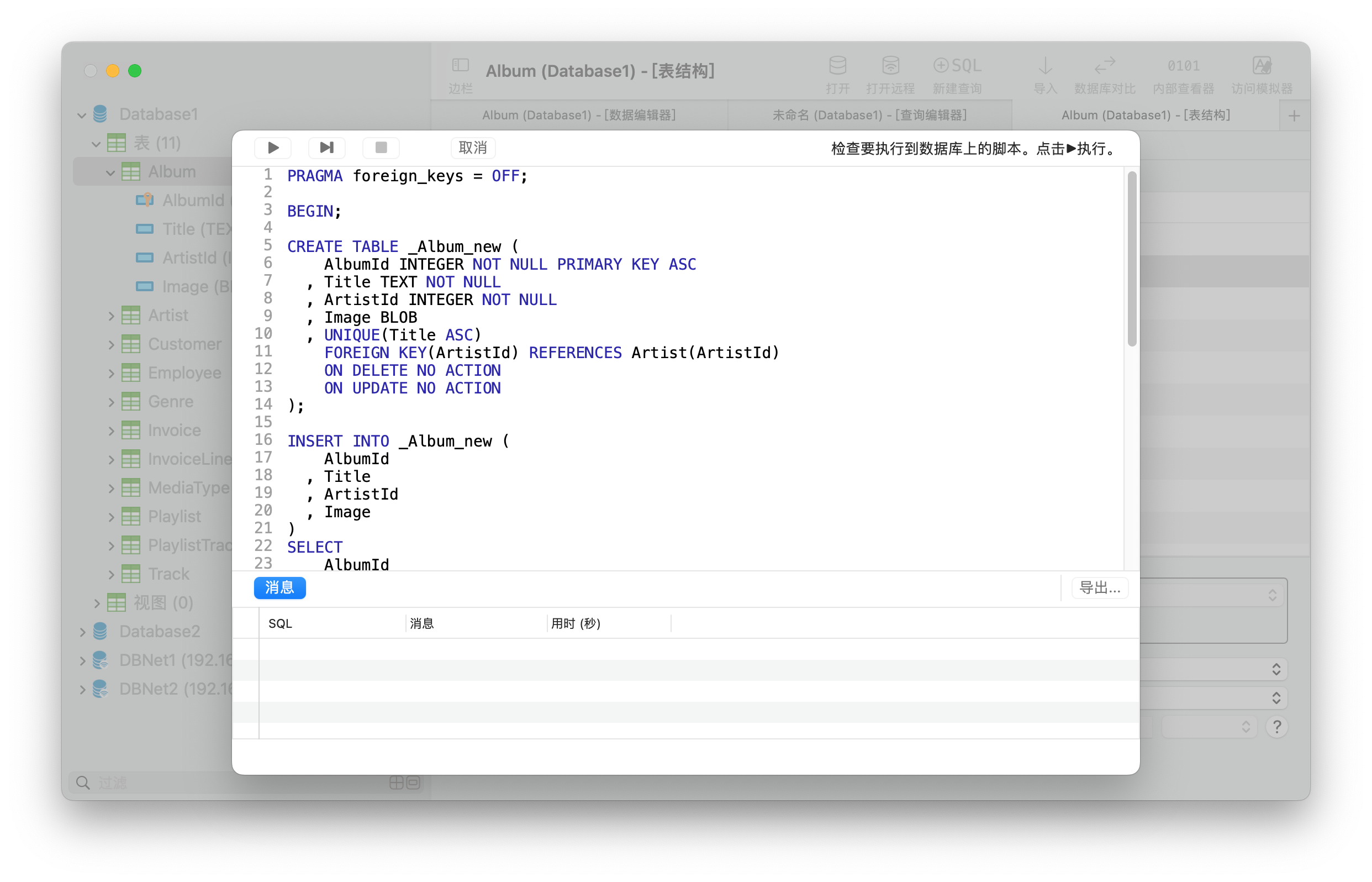

Supports generate SQL text that can let you transform a database content into another.This feature may help you get more insight about your SQLite databases' data storage information, which may let you see if there're any chances to let SQLite working in a more effective way in your device. Supports show size of each table's index.Supports show size of each table's content.Supports show records count of each table.Supports drag and drop to import or export SQLite databases and SQL files in iPad.Supports let SQLiteFlow(macOS) connect databases in this app.Supports display each table's name and records count.View, edit or add table fields, indexes, foreign keys, checks.

Edit blob as hex, show blob as image if possible.Sort records by tapping on column title.View table data with a convenient filter.Supports open external SQL files, CSV files and Filter files.Supports import database from iCloud Drive by the file picker.Supports add, remove, duplicate, rename folders, SQLite databases, SQL files, CSV files, etc.
Sqliteflow for mac#
You can leave me a comment or write to me via the contact form.Two-week free trial! So you can purchase SQLiteFlow after you know you like it! SQLiteFlow is an SQLite editor for Mac & iOS which is intuitive, stable and reliable to use.
Sqliteflow how to#
I’d really like to hear if you have any ideas on how to improve the script or the process of opening the database. I really hope you will find this short blogpost helpfull. Right now, opening the SQLite database takes me 10seconds instead of 2 minutes. I’ve spent maybe 30minutes creating that shell script. Voilà! Db browser (or whatever you are using) should open. your-file-name.sh YourAwesomeAppWithSQLiteName Now, check if your app is running on a simulator. You need to run it only once so fire and forget. Now, you need to run chmod +x your-file-name.sh. In opened terminal navigate to the location where you have saved you “.sh” file. But trust me, it can be pretty helpful, so don’t be afraid. I know that many developers don’t want to open a terminal as they think it’s reserved for hackers, DevOps etc. Find a name for your script and save it with “.sh” extension.
Sqliteflow code#
Create an empty file in Visual Studio Code (or whatever you use) and save it in some handy place.
Sqliteflow manual#
When doing manual stuff, I try to think if there is a way to make it automatic. Although the process of opening a database is not that hard, it’s easy to forget and pretty boring. This week, I’ve decided that I have enough. This solution only works for Mac computers. Sounds familiar? If yes and you are fed up with this stick with me for the next 10minutes. Then copy the path and open it in “Db browser for SQLite”. I think you’ve probably seen the solution where you have to open “Activity Monitor”, find your app in processes, check “open files and processes” and search for “.sqlite”. Did you ever wonder how to open SQLite database on iOS simulator? If yes, then you probably googled “how to find a path to SQLite database on iOS”.


 0 kommentar(er)
0 kommentar(er)
